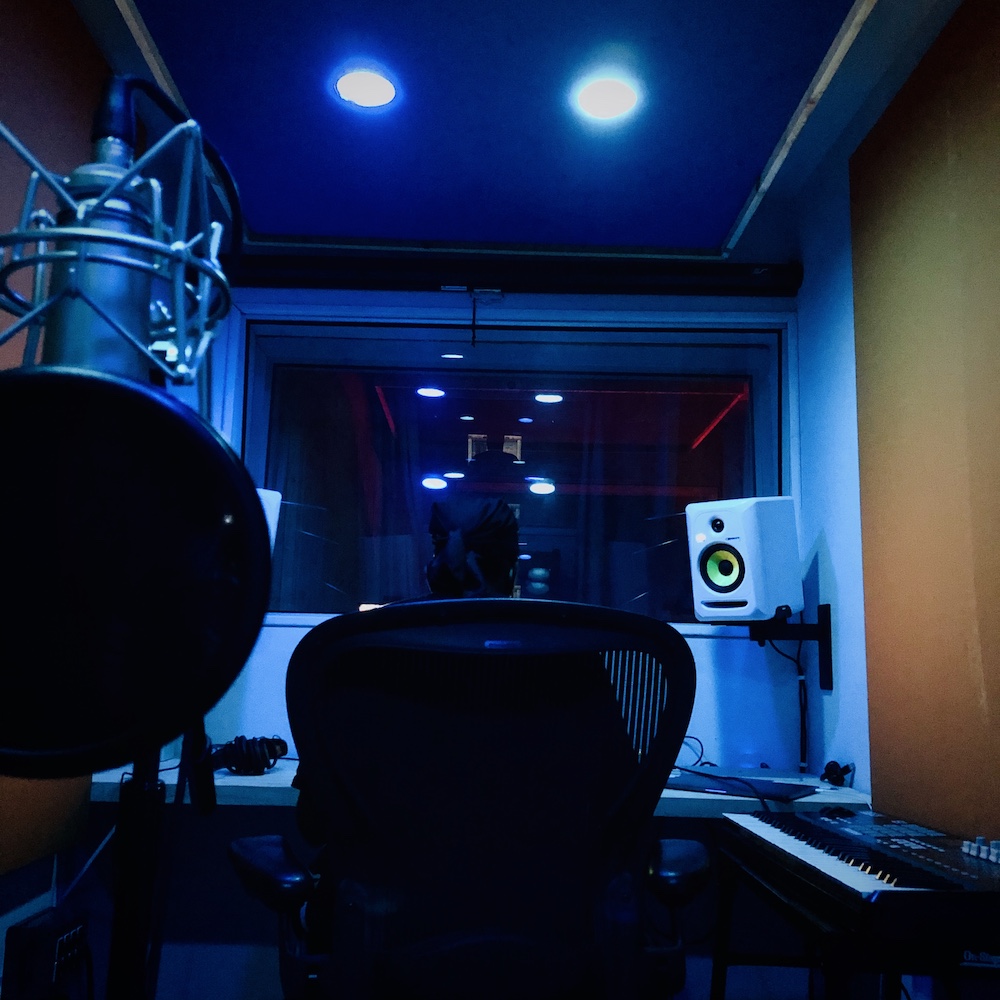If you’re struggling to fine-tune your vocal production chops, don’t be alarmed. Every time a new vocalist steps up to the mic, there are a bunch of variables at play which can skew our results from session to session. Keeping these principles in mind, you can enhance your recordings and mixes for more consistent results over time!
1. Record Dry
Unless you have a specific creative reason not to, it’s best to keep your vocals dry on the way in. Printing reverb or delay is dangerous, as it can present a whole bunch of problems when it comes time to edit and comp. Reverb or delay tails will very noticeably be cut off as you edit breaths, etc. Time-based effects need to decay naturally to create space, so any choppiness will be distracting to listeners.
It’s also a good idea to keep EQ relatively light, possibly with just a high pass filter to contain the low end. It’s much easier to EQ a full-frequency vocal while mixing than having to add back frequencies you might have removed on the way in.
Recording dry also means you’ll need a well-treated vocal booth, i.e., it’s probably not a good idea to record vocals in the bathroom! Room reflections and comb filtering will hinder your vocal production from the onset. If you’re working from a home studio, you should consider investing in acoustic treatment to minimize these problems.
2. Give Your Vocalist an Inspiring Cue Mix
The antithesis to #1 is layering up the effects so your vocalist has something fun to listen to while tracking. If you’ve ever recorded yourself, hearing your voice totally dry can be a little unnerving. When a vocalist feels like they’re printing the final mix in real time, their performance will be confident and inspired.
Of course, adding plugins to a track on which you’re recording introduces latency, which can be minimized by DSP hardware or decreased buffer sizes in your DAW. At the very least, giving your artist a little reverb will take the edge off of a totally dry vocal and put the singer in a better creative headspace.
3. Loop Record and Comp Takes
Rarely does a vocalist blaze through an entire track in one take without any mistakes. For the overall best sounding vocal production, you’ll probably want to record multiple takes of sections or phrases and comp them later.
An easy way to get passes of a section is to set up loop recording/automatic playlisting in your DAW. In Pro Tools, simply make a selection, enable Loop Record (numeric 5 on the keyboard), and start recording (numeric 3). Be sure you’ve also enabled a preference which automatically creates a new playlist while loop recording.
You can also manually punch in for multiple takes of a section.
4. De-ess Carefully
De-essers are amazing tools which help us reduce harshness in sibilant frequencies. It’s easy to get carried away, though, and totally suck the life out of a performance.
If you’re applying a de-esser and hearing the vocal get “dull,” “dark,” or even “artificial” sounding, back it up a bit! The de-esser will still do its job without being overbearing and ruining an otherwise good vocal.
5. Use Saturation to Give Your Vocal Interest
Beyond basic mixing tools like compression and EQ, how often do you consider saturation when mixing a vocal track?
Saturation plugins emulate what analogue equipment used to do on a recording. It adds rich harmonics/overtones and a bit of distortion to make a vocal “fatter” and more exciting for listeners. It can help push a performance to the front for an “in-your-face” sound.
You can experiment with saturation to give a vocal more edge, helping it stand out in a dense mix. Lo-Fi, included with Pro Tools, is just one example of these types of plugins that can enhance an otherwise dry/dull vocal. This is a creative vocal production trick to give your mixes more interest.
6. Avoid Pushing Lead Vocals Back with Reverb/Delay
When we use reverb, we’re trying to create a “space” for a mix element to live. Oftentimes we add it with the intention of bringing our vocals to the front, when in reality we find we’ve only pushed them further away.
Barring specific creative intent, this usually isn’t what we’re after on a lead vocal! The key is to utilize pre-delay.
Pre-delay works by separating the dry signal from the wet signal via a user-set delay. The result is hearing the space and dimension that we wanted from our reverb without pushing the dry vocal into the recesses of the mix.
